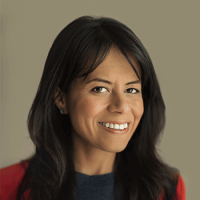Mexico's Special Economic Zones: White Elephants?
In June 2016, Mexico enacted a federal law to create Special Economic Zones (SEZ) in four of the poorest regions of the country.
In June 2016, Mexico enacted a federal law to create Special Economic Zones (SEZ) in four of the poorest regions of the country.

In June 2016, Mexico enacted a federal law to create Special Economic Zones (SEZ) in four of the poorest regions of the country. The initiative aims to reduce the markedly unequal levels of economic development inside Mexico, with a set of wealthy, internationally connected northern states, and an agricultural south that seems mired in perpetual underdevelopment.
Mexico will create its first Mexican SEZ in the Pacific port of Lázaro Cárdenas, on the border of the states of Michoacán and Guerrero, and the other three will follow at the Isthmus of Tehuantepec (Veracruz and Oaxaca states), Puerto Chiapas (Chiapas), and the Coatzacoalcos Corridor /Ciudad del Carmen (Campeche). The goal is to have at least one “anchor firm” operating in each SEZ by 2018, the last year of the current administration.
Mexico’s SEZ policy is inspired by the relative success of China. An SEZ is a geographically delimited area designed to attract Foreign Direct Investment (FDI) by providing tax incentives, trade facilities, duty-free customs benefits, infrastructure development prerogatives, and easier regulatory processes[1]. The SEZs that were created in China during the eighties (Shenzhen, Zhuhai, and Shantou in Guangdong Province) became economically successful, now accounting for as much as 22% of national gross domestic product, 46% of FDI, and 60% of the total exports of the country. China’s SEZs also generate about 30 million jobs (Zeng 2015)[2].
Yet, even if China has managed to succeed, Mexico’s bet on SEZ as a model to create economic development is quite a risky bet.
The success of similar models of development around the world is mixed (Farole 2011b). Investment does not always arrive in the amounts that are expected (as in Haiti) or arrives only to leave after some years of production (the Dominican Republic). Even in instances where attracting foreign investment was possible, most SEZs have failed to create a proper economic climate that provides tangible benefits to local communities in the form of fair wages and income equality (Farole et al 2014). Only a small number of SEZs have managed to properly develop local industries able to link their production with FDI companies (Honduras). As World Bank experts have pointed out (Farole et al 2014), even in the case of China, many SEZs originally designed with good intentions ended up promoting enclave economies where investment flows with a race-to-the-bottom fiscal and wage logic, and employment is created under the claim that a low-paid-job is better than no job at all.
If the Mexican government wants to use the SEZ as a model to develop its poorest states, it must understand that the odds are against it. And thus, it must be the most proactive in holding a serious, creative and honest debate about how to turn Mexican SEZs into real engines of development for all Mexicans, not just for the few that will be able to invest in large scale.
There are five important topics that must be addressed to make a success out of Mexico’s SEZ model:
1. Select a socially responsible SEZs administration. Each of Mexico’s SEZs will be administered by an “integral administrator” (IA), a private firm or parastatal in charge of developing, regulating, administering, constructing and maintaining the zone during an assigned period of up to 40 years[3]. IAs will be picked via competing offers from different bidders and will have enormous influence inside the zone, from setting the rules of operation and the guidelines to avoid accidents, to profit from renting the use of the zone and the services it will provide to investors. As a result, the selection of IAs may well be one of the most critical public bids that Mexico will conduct in its recent history. The IA must be selected not only because of its capacity to operate but because of its ambitious social goals. Criteria such as bringing the highest possible net economic benefits to Mexico, in terms of human and social investments, job creation, and demonstration effect, must be critical to evaluate who the best IA bidder is. Once selected, strong mechanisms to create checks and balances for IAs must be implemented, particularly mechanisms that allow legitimately independent worker and community representation[4].
2. Define success as local development, not as foreign investment. Mexico’s government has defined the SEZs’ goal in terms of developing regional value chains and expanding local public services, but not how to achieve that. In places where foreign direct investment has managed to create healthy and strong local business communities, the government has generally had considerable influence over the process (Zeng 2011, The World Bank 2015). The government must be proactive in incentivizing “matchmaking” between foreign investors and local firms (Farole &Akinci 2011). It must also help locals secure proper land tenure and access temporary protection and training to create profitable local business[5]. In Taiwan and South Korea (both examples of success), governments were aggressive in pursuing policy interventions that developed backward linkages with local firms. It is important to realize that developing the broader local community is a requirement for long-term SEZ survival because, as cases like India and Bangladesh have shown, when the communities surrounding a SEZ are disenfranchised and poor, popular uprisings against the project become common (Farole et al 2014).
3. Avoid industries that reinforce competitiveness via low-paid-jobs. World Bank experts have recognized that most SEZ initiatives tend to create low-skill wage-earning jobs (Farole & Akinci 2011, Farole et al 2014). Mexico deserves better and the only way to achieve this is by creating the conditions to attract industries that require skilled workers. Adapting education curricula and requiring companies to provide training and courses for their employees is one way to do it. Teaching English is also critical (lack of language skills is one of the main inhibitors for upper mobility inside multinationals). Another way to avoid race-to-the-bottom wages is to regulate, as Honduras has successfully done, so that at least 85% of the total wages are given to local workers.
4. Promote anchor firms that are complex, not simple and exploitative. The purpose of Mexico’s government is “to secure investment from at least one 'anchor' firm per SEZ by 2018,” but the more important goal should surely be to secure investment from a strategic 'anchor' firm rather than setting an arbitrary date due to the electoral cycle. The selection of an anchor firm cannot be rushed. It is critical that Mexico takes time to attract complex industries, not just the first industry that decides to invest. By complex, I mean industries with large possibilities of knowledge spillovers into the regions. Industries that tend to promote simple exploitative activities may seem appealing in the short term, particularly if results want to be shown for the 2018 electoral process, but will end up having quite undesirable economic consequences in the long term. Mexico must be proactive in identifying the economic path it wants to follow.
5. Avoid the “Mushroom Effect,” meaning the rapid creation of many SEZs that compete with each other (Zeng 2015). Competition is healthy for innovation and growth but it needs to come with the right timing. Too much competition, too early may impede the consolidation of Mexico’s SEZs. It is important to make sure that one or two zones are working properly before scaling-up. Furthermore, a period of incubation may be required otherwise some SEZs may end up competing between themselves, and even with the north of the country. As of today, five Mexican states are responsible for 55% of Mexico’s total export (Chih, Coah, NL, BC and Tamp). SEZs must attract new investors not just those that are already located in those five states.
To avoid turning the SEZ initiatives into white elephants, Mexico must realize what the literature has shown for SEZ cases around the world: that reducing taxes and providing cheap labor is not enough to attract FDI (Farole 2011a, 2011b, Falore & Akinci 2011, Farole et al 2014, Zeng 2011, 2015). On the contrary, research has been pretty conclusive in showing that what makes a SEZ successful is not fiscal prerogatives, but a broader healthy environment to do business (Farole et al 2014). Variables like infrastructure, human capital availability connectivity and energy cost are more determinant of investment attraction than fiscal prerogatives and low wages. Mexico must create “smart incentives” such as rule of law, high quality of human capital, strong government/private partnerships, general investment climate reforms, sector-wide incentives and value-chain support. It won’t be easy.
References
Harney, Alexandra (2008). 'Getting Over China' in The China Price: The True Cost of Chinese Competitive Advantage. Penguin. p. 352.
Farole, T. (2011a). Special economic zones in Africa: comparing performance and learning from global experiences. World Bank Publications.
Farole, T. (2011b). Special economic zones: What have we learned?. World Bank-Economic Premise, (64), 1-5.
Farole, T., Camp; Akinci, G. (2011). Special economic zones: progress, emerging challenges, and future directions. World Bank Publications.
Farole T., Norman M. & Kilroy A. (2014). Special Economic Zones (SEZs) and Cities: Opportunities for mutual benefit in South Africa. World Bank RAS to National Treasury CSP.
FIAS (Foreign Investment Advisory Service). 2008. Special Economic Zones: Performance, Lessons Learned, and Implications for Zone Development. Washington, DC: FIAS.
The Economist (2015) “Special Economic Zones. Not so special” The Economist April, 4th, 2015
World Bank (2015). Management models for Special Economic Zones: Draft note to the Government of Mexico. World Bank Group.
Zeng, D. Z. (2011). How do special economic zones and industrial clusters drive China’s rapid development?. World Bank Policy Research Working Paper Series, Vol.
Zeng, D. Z. (2015). Global experiences with special economic zones: focus on China and Africa. World Bank Policy Research Working Paper, (7240).
[1] The first SEZ was opened in Shannon, Ireland, in 1959 yet, it was not until 1970s that East Asia and Latin America countries started designing SEZ to attract investment in labor-intensive manufacturing from multinational corporations (Farole & Akinci 2011). As of today, estimates point to the existence of 4,000 SEZs that account for more than $200USD thousand millions in global exports and directly employ at least 40 million workers (FIAS 2008, The Economist 2015).
[2] The word success must be taken with care. Studies have shown that working conditions in some SEZs are poor, unregulated, unsafe and unhealthy, and also point to important environmental damage (Harney 2008).
[3] Recent studies from The World Bank has concluded that there is no evidence that privately managed SEZ perform better than publicly owned. Actually, some of biggest SEZ successes are government managed such as China, Singapore, the UAE, and Malaysia (Farole 2011a, 2011b).
[4] In the current draft legislation, the selection of worker representatives may be influenced by bosses. The Technical Committees, for example, can theoretically include a worker and an executive representative from the same company --a direct chain of command creating conflict of interest. Regulations must specify that worker representatives are not employees of firms whose executives sit at the Technical Committee.
[5] The effectiveness of such linkages may depend in part on treating sales by domestic firms to SEZ firms as exports (Farole et al 2014). Currently, Mexico’s SEZ will exempt the VAT to all companies, except if they sell their goods inside the Mexican markets. Clearly, this may inhibit the development of local markets in favor of only export-oriented industries.
This article was also published on the Mexico Institute's blog on Forbes.com.


The Mexico Institute seeks to improve understanding, communication, and cooperation between Mexico and the United States by promoting original research, encouraging public discussion, and proposing policy options for enhancing the bilateral relationship. A binational Advisory Board, chaired by Luis Téllez and Earl Anthony Wayne, oversees the work of the Mexico Institute. Read more


